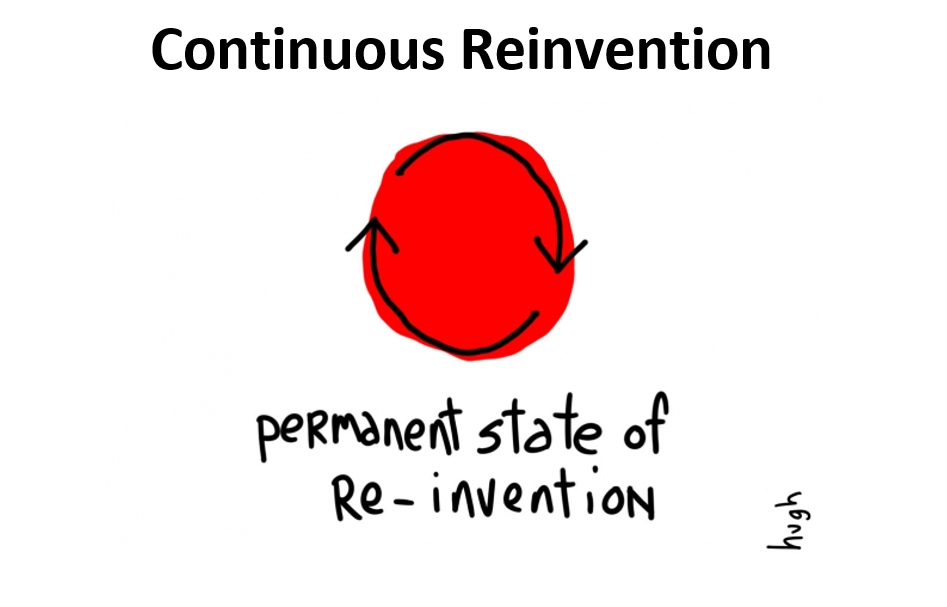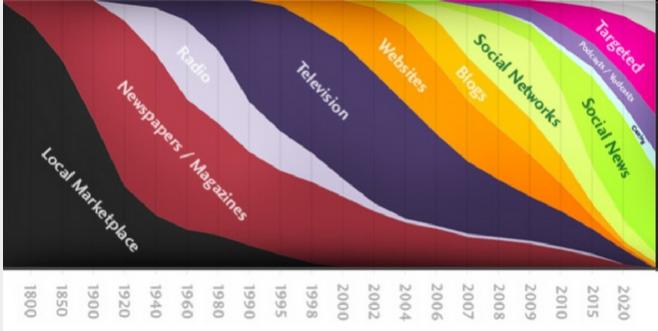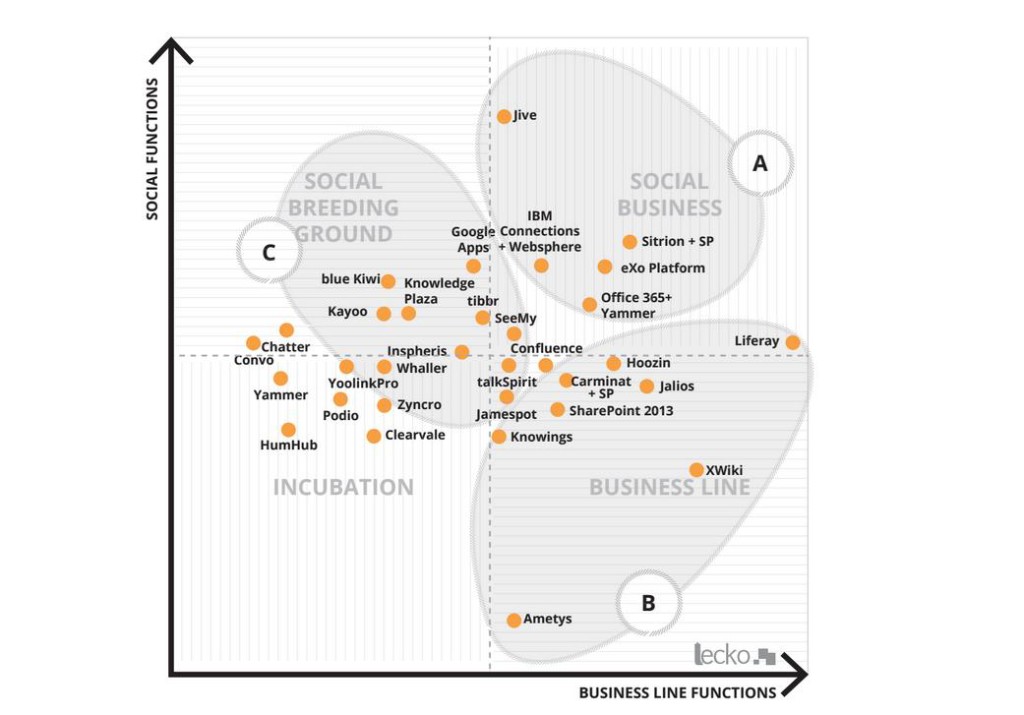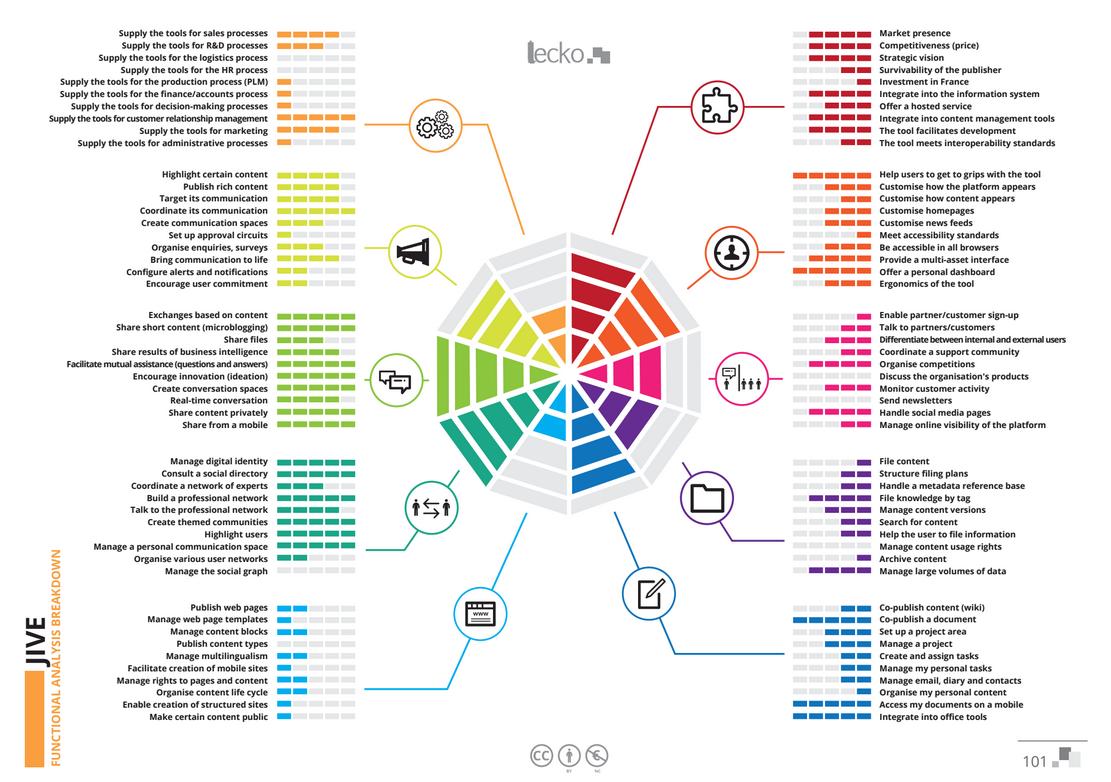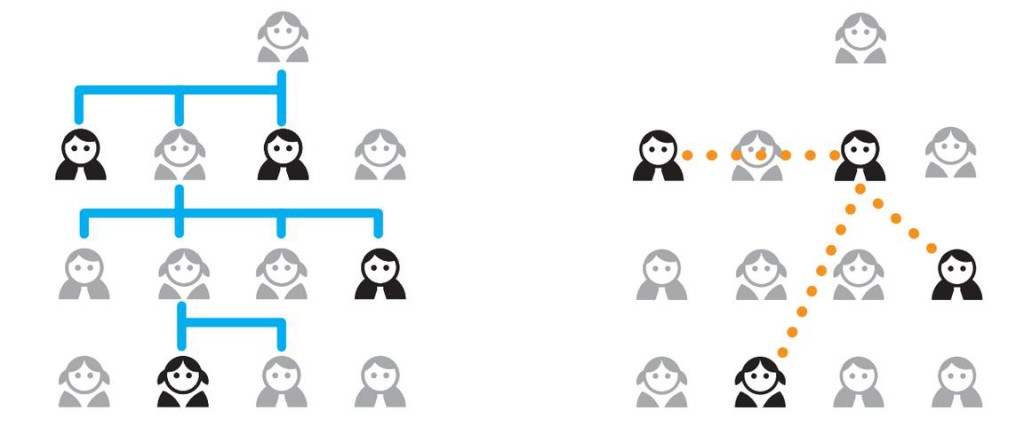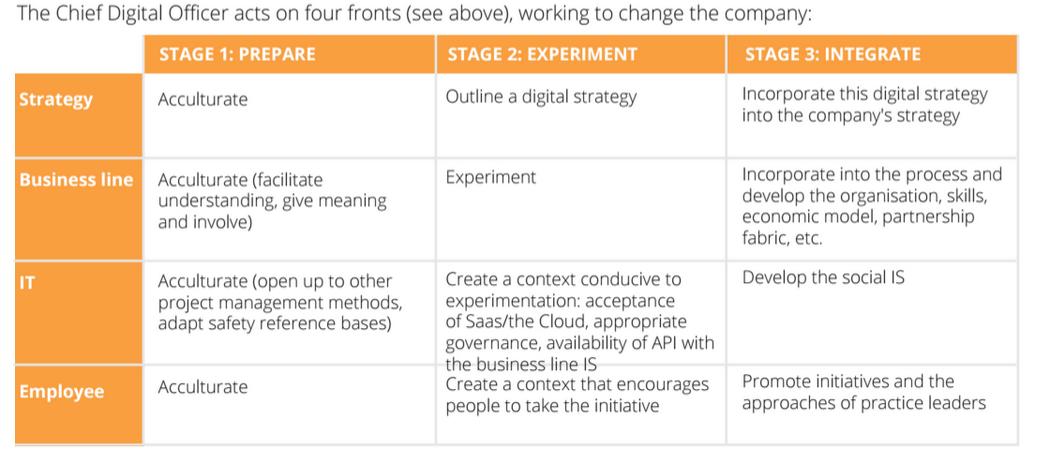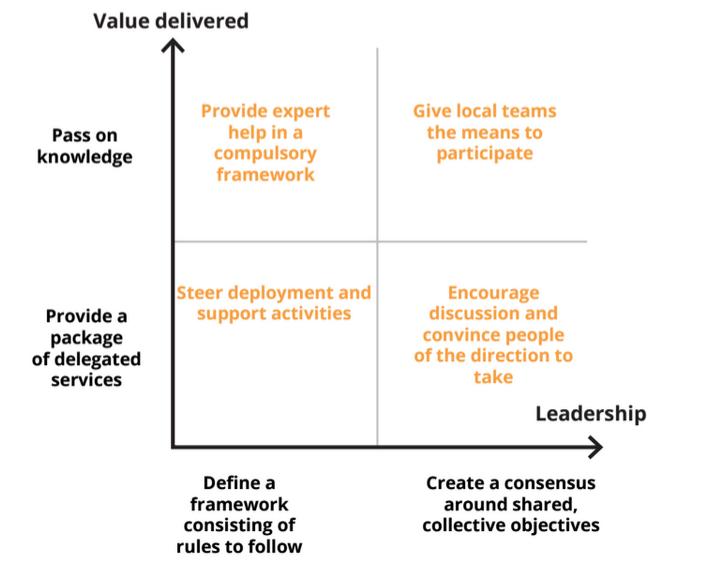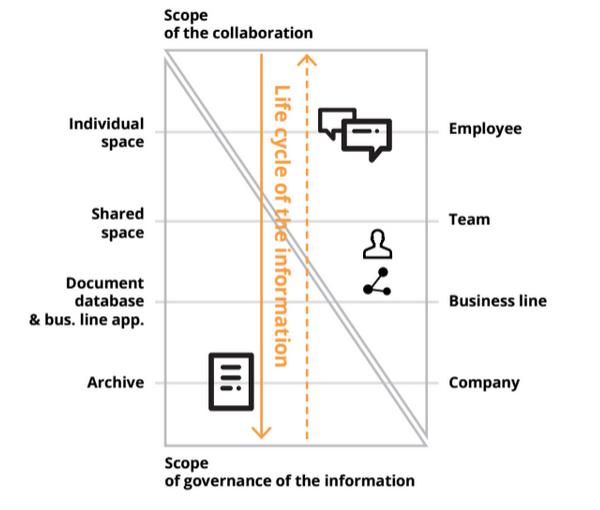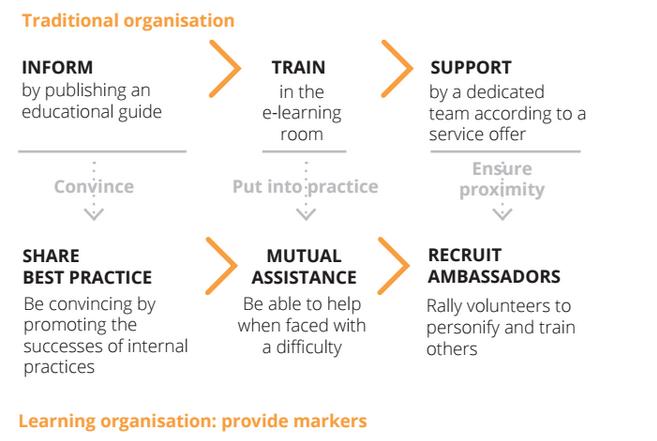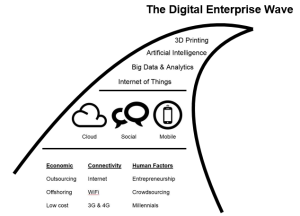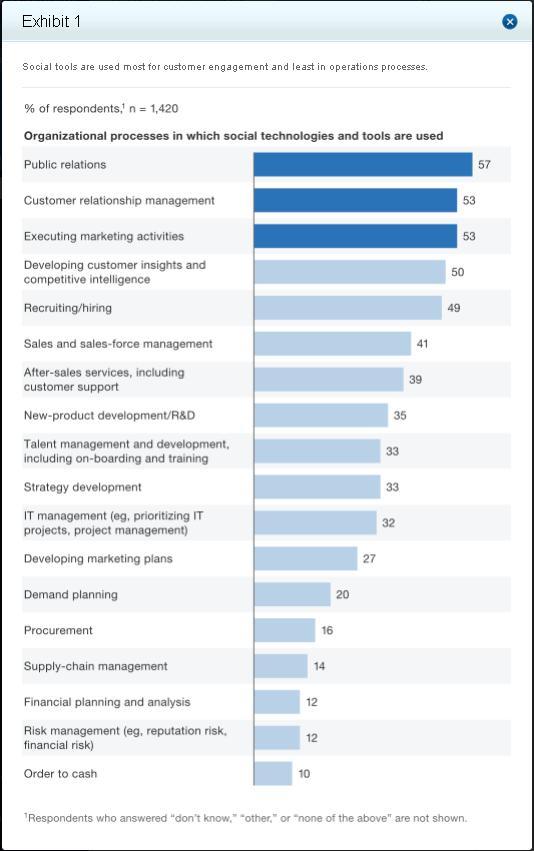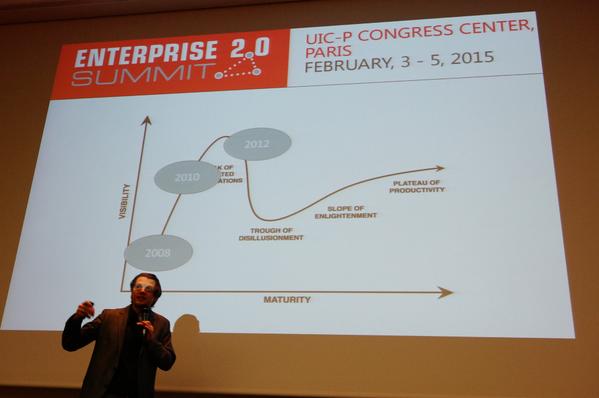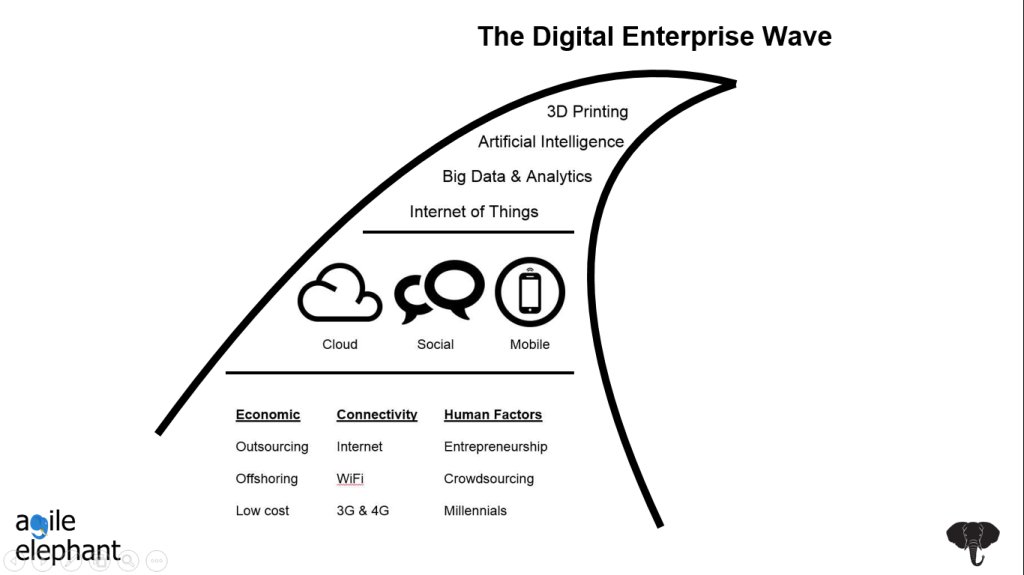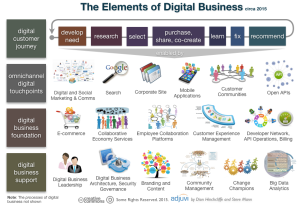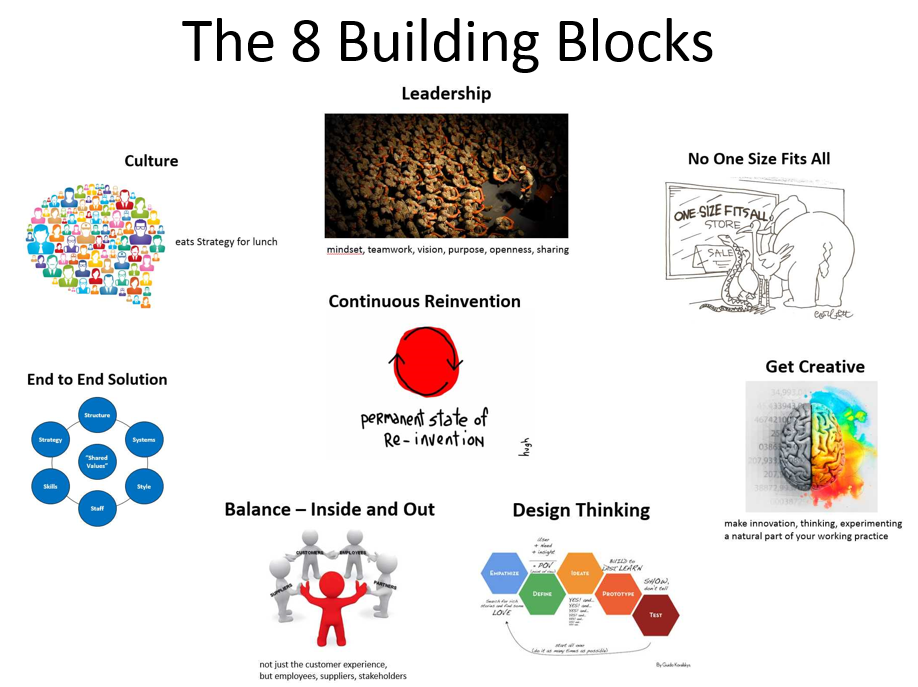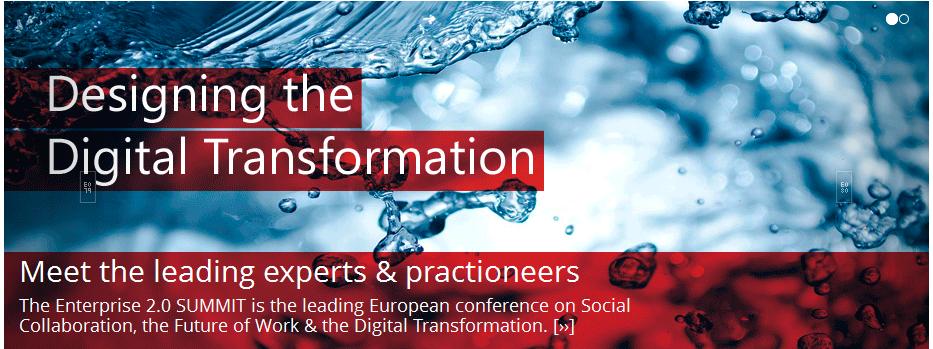As my last post explained, I was privileged to do the opening keynote, substituting for Dion Hinchcliffe, at this week’s Social Business Arena at CeBIT 2015. The theme of the show was social as the enabler for digital transformation. I expanded on a session I did at the Enterprise 2.0 Paris Summit with some additional material on our 20 year journey in to a “world gone digital” since the publication of Nicholas Negroponte’s Being Digital in 1995. I added some Dion slides (but avoided doing a Dion impression) to explain the challenge that the typical CIO has dealing with legacy IT, edge IT and the shadow IT that is happening because their department isn’t being responsive enough.
We are living through a time of immense disruption. We explain it in the presentation as the Digital Enterprise Wave. IDC calls it the Third Platform. Gartner calls it the Nexus of Forces. It doesn’t matter what we call it, but it does mean that everyone’s business model is under threat. You need to transform, but how do you do it? First you have to get educated, and I suggest 3 books you might read covering the global forces at work, the management shift required, and the kind of leadership that organisations need to adopt to start real, digital thinking. Then I’ve added in our definition of Digital Transformation. There are several you can find (that I link to in my definition blog post) but we believe there are key ingredients missing from some of the explanations you can find. After that I work through 8 strategic building blocks you need to address to form the basis of the change that your organisations needs to go through. One important factor I bring in that is usually missed by so many is creativity. When we live in a world where content can appear to be free, or we can use low cost resource, or Amazon’s mechanical turk, competing with commodity ideas on price just won’t cut it. More than ever we need to be teaching our kids, our employees, our managers and leaders thinking skills, and we need to make our organisations live and breathe creativity. When your business is under threat and needs a reset, new ideas are the weapons that you need to make progress.
Here is the audio and slides from Monday’s keynote. They did video me, but I guess I was probably jumping around on stage in too animated or distracting a fashion. It was a blast – hope you enjoy it.
So my core message is that the most important of the 8 blocks is that you need to change your and your organisation’s mindset to a permanent state of re-invention.

